That boggled my mind at the time (green paint?!), but he was perfectly serious.
I tell this story now because (a) I thought some of you would get a kick out of it; and (b) I am reminded of it every time someone asks me about artificial turf. That’s been happening more lately in the context of the drought. “Is artificial turf a good option for our dry climate?”
On the one hand, it seems pretty sensible. Traditional lawns require copious amounts of water and often herbicides to look great, while artificial turf doesn’t need any of those.

A beautifully lush grass lawn in Menlo Park
The look and even the feel of artificial turf have improved so that it more closely approximates a natural lawn. Furthermore, it “grows” well in sun and in shade, in summer and in winter.
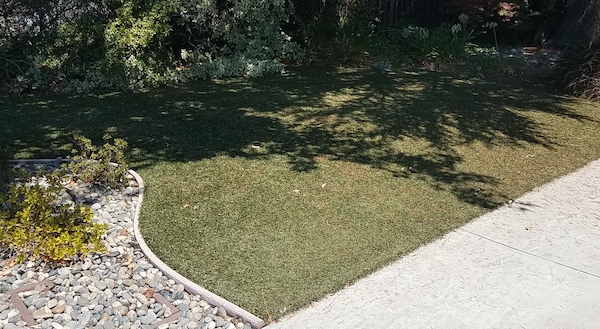
A small “lawn” of artificial turf in Palo Alto needs minimal care
With no water, no mowing, a consistent look, and decent resilience to traffic when properly installed and maintained, there are some very practical reasons why turf is appealing. But many of you hesitate because you know that it’s not a natural material. Is it true, you are asking, that the best option we have for saving water for lawns is to essentially wrap the ground in a sheet of plastic?
The “best” option is clearly subjective, but I thought I’d go over some of the downsides to turf that may not be evident, then review a few other options for reducing lawn water use.
Artificial turf is a large plastic barrier between the soil and the air. As such, it can heat up the compacted ground beneath and generally isolate it from the natural environment above. That makes the soil less habitable for the many insects and invertebrates that we need to sustain the ecosystem and provide food for birds and other animals. With little exchange between the soil and the air, this grass look-alike functions more like asphalt than grass.

The general structure of artificial turf. Source: Wikimedia Commons
Fake grass is also not an inexpensive option. The New York Times’ Wirecutter has a good overview of this, with many pointers to relevant information. In a nutshell, quality installations cost more because they try to mitigate some of the traditional problems with turf -- fading from UV rays, smelling from pet waste, heating up (even melting) in summer, pooling of water, seams between pieces, and so forth. I hear estimates of $10-$15/sf, and even then you can expect to replace it in about ten years. At that point it will go into a landfill and you will be back to bare and now lifeless dirt. (1)
But if you love lawns, what are your choices? I understand the appeal of lawns. I grew up with front and back lawns that my Dad carefully tended. I have a small back lawn today, and over the years we have enjoyed putting our beach towels down on it, running around with the dog, playing croquet, setting up a tent, and so on. It’s a lot softer than pavers (and usually prettier, though not this year), and it’s much less messy than something like decomposed granite. But I’ve been struggling with whether it’s the right choice. It is not looking so good as we water it much less. In addition, we don’t use herbicides, so it is constantly mixed with oxalis, clover, and dichondra, plus a type of grass that turns brown in summer (annual bluegrass). It seems harder each year to maintain the patch of lawn so it looks nice. Artificial turf would be one option, but is it the right one? Everyone’s yard needs are different, but I want to go over a few alternatives to artificial turf that may appeal.
Switch away from a lawn entirely
Sometimes we have lawns where we don’t need them functionally. Front yards and grassy strips are examples where a lawn might not be needed for frisbee games, camping, or dog playdates.
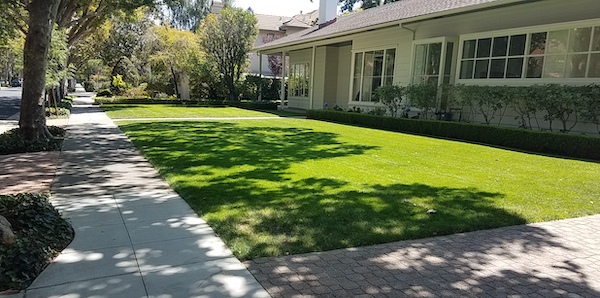
Is this front lawn functional or just aesthetic?
If you have a lawn that you don’t use as such, there are loads of other options that use less water, are easier to maintain, and provide food and shelter for local birds and insects. The right option will depend on how much time and budget you have, as well as your aesthetic preferences. Valley Water has some information here. I include a few examples in the footnotes. (2)
If undoing the lawn is too much to contemplate, the strip near the sidewalk might be a simpler possibility.
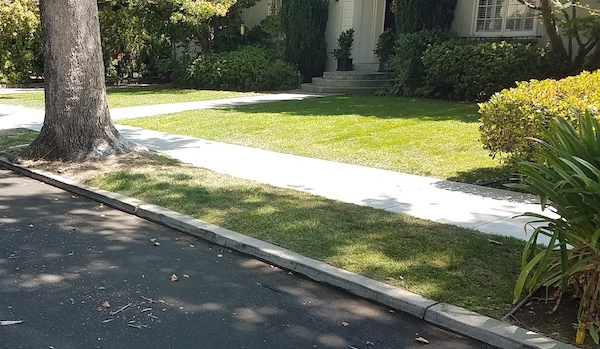
This home has a grass lawn with grass strips by the sidewalk.
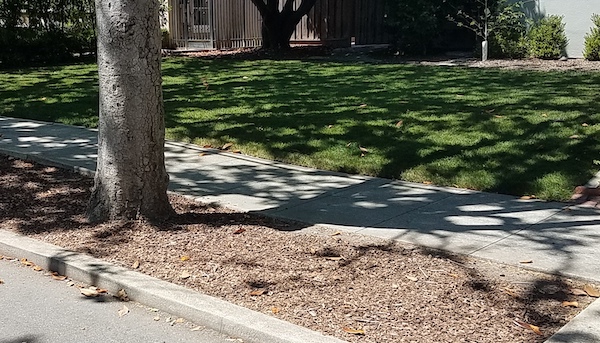
This home has a grass lawn with a mulch strip.
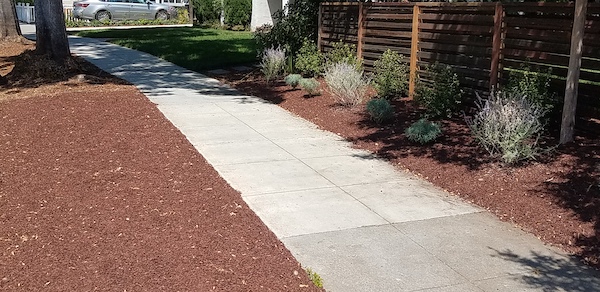
This homeowner mulched the strip, plus a part of the yard to match.

This homeowner planted low water grasses in both areas.
Substitute a lawn equivalent
If you (or your dog?) do use your yard to run and play on, then a lawn-like equivalent may be a good option. There are a number of plants that provide lawn-like functionality but with lower water use, less need for herbicide, and a more beneficial impact on local birds, butterflies, and insects. Options I have heard touted for our area include lippia, yerba buena, varieties of carex (sedge grass), dymondia, and elfin or wooly thyme.

A lippia yard in Los Altos
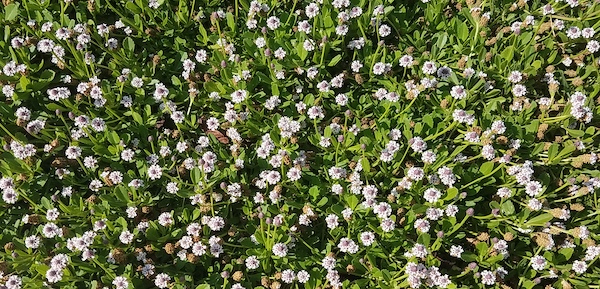
A closeup of the lippia
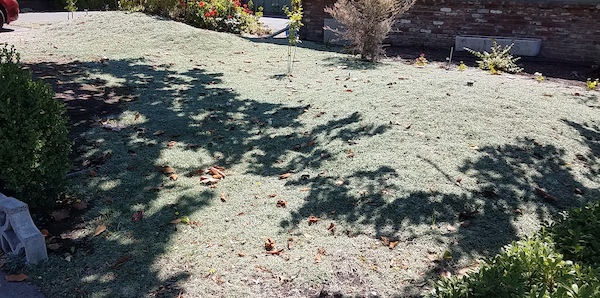
A dymondia (aka “silver carpet”) yard in Palo Alto

Some type of sedge grass in a Palo Alto yard
Some of these plants do better in sun or in shade, and some can take more traffic than others, so you will want to look them up and ask at your local nursery. I am testing out carex pansa in my yard because it can tolerate traffic and some shade pretty well.
The demonstration garden at 851 Center Drive in Palo Alto has some samples of lippia, dymondia, wooly thyme, and a few grasses (one of which looks pretty awful!)
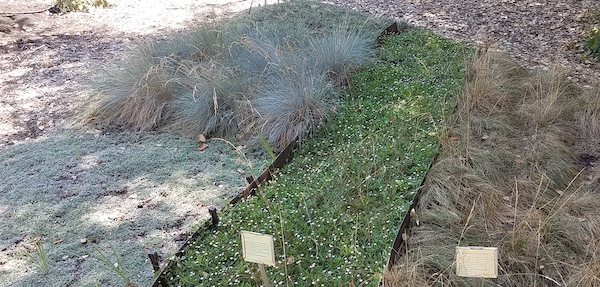
Some lawn alternatives at the Demonstration Garden in Palo Alto
Shrink your lawn
Another approach is just to reduce the area taken up by your lawn by carving out spaces around it that are less water intensive.

This Menlo Park home reduced their lawn size with a low-water planting in front.
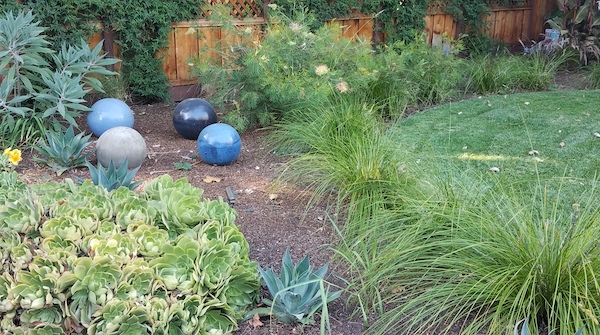
They also cut out a big space on the side for sculpture and succulents.
While the landscaping project above looks like it was done when the lawn was installed, you can also do it after the fact. One way to remove lawn is to put down some compost on the grass, layer some builders paper or thin cardboard over it, wet the paper, then cover it up with arborist mulch (ideally) or some type of bark mulch. You can turn off the water to this area and let it sit over the next few months during the rainy season. The soil will gradually improve as the compost works its way in, and in a few months you can begin to plant through the paper/cardboard layer. This approach is called “sheet mulching”, and is a healthy and inexpensive way to remove lawn. There is no need to pay a gardener hundreds or thousands of dollars to use herbicides and rototillers. (3)
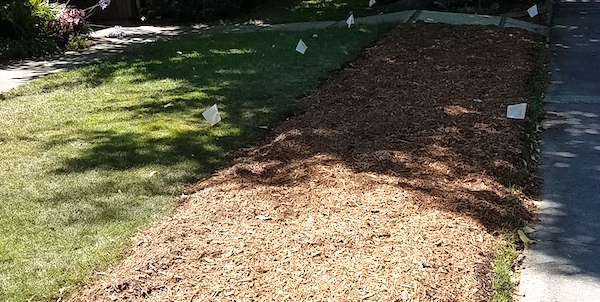
This Palo Alto home is removing grass by the sidewalk via sheet mulching.
Our house has an area under an elm tree where grass hasn’t grown well due to shade and shallow roots. So I decided to remove the grass but took a shortcut by just applying mulch over it. Unfortunately, that has caused the little grass that was there to grow like gangbusters through the mulch. My advice is -- don’t omit the cardboard or paper!

Removing grass under a tree canopy
Consider mulch
It is much cheaper to mulch an area than it is to put in artificial turf. If you are considering an area under a large tree, mulch will also probably look more natural than turf, since lush grass doesn’t grow under many of our trees here, like oaks or redwoods. Artificial turf can also make it more difficult for cool air and water to get to the tree roots, effectively smothering the tree. Mulch, whether leaf mulch from the tree itself or arborist mulch from elsewhere, can provide appropriate protection as well as habitat and even food for insects.
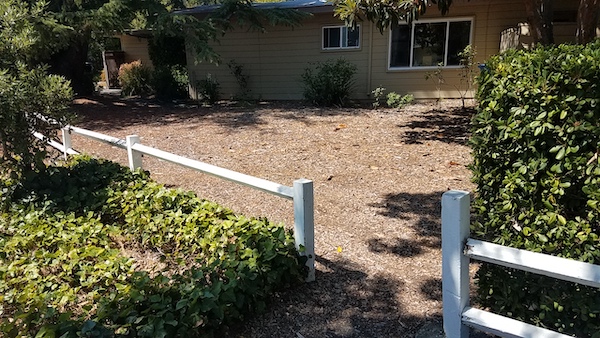
This mulched yard with green trees and shrubs in Palo Alto has a natural look
Water less (!)
As I walk around our neighborhoods, it’s clear that many residents have been trying to respond to the drought, whether by adjusting plantings or adjusting watering schedules. I expect we will be asked to reduce water use by 15% soon, and watering less often is an easy change to make. (4)
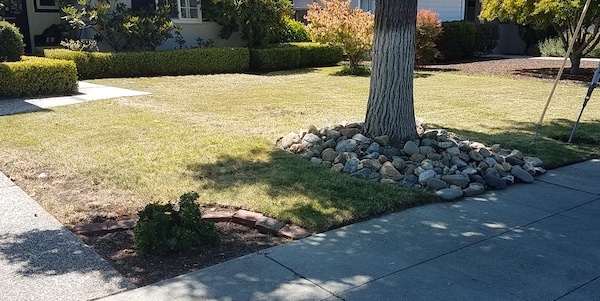
The grass is doing fine, but it’s not a lush green lawn like some shown above.

This lawn seems to be getting even less water, but it is still hanging in there.

These Los Altos residents have posted an explanation for their bare front yard.
Artificial turf is just one of many options we have for using less water for lawns. In some cases it may be the best option. It seems like a good choice for these small well-trodden cut-outs at JLS Middle School in Palo Alto.

Turfed areas at JLS Middle School
But I expect that for most of our yards we can find a way to reduce water use that is less expensive, more sustainable, longer lasting, and looks just as nice or better.
Notes and References
0. lawntogarden.org is a terrific site with lots of information about converting your garden.
1. Well, only if you’re lucky. In most cases, some of the “infill” used to protect and enhance the plastic grass will wind up in your soil. Infill is traditionally rubber crumbs, though there are some other options. If you look around the Cubberley track, you will see rubber crumbs everywhere from the previous turf field.
2. Here are a few local examples of lower-water landscaping.

This contemporary landscape mixes and matches a few different kinds of grasses with large pavers.
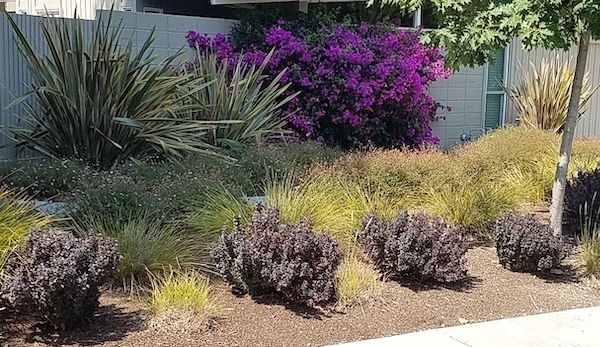
This landscape displays different colors, textures, and heights.

Succulents and rocks are featured in this very low-water landscape.
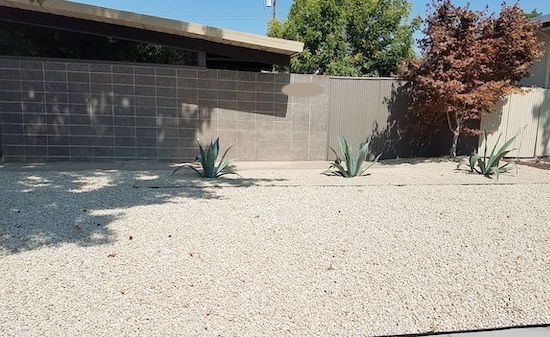
This spare design must be almost zero maintenance.
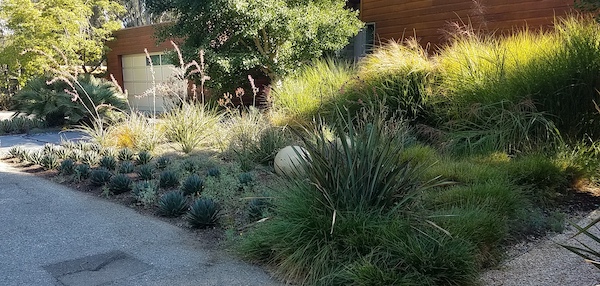
This yard is replete with succulents, grasses, and more.
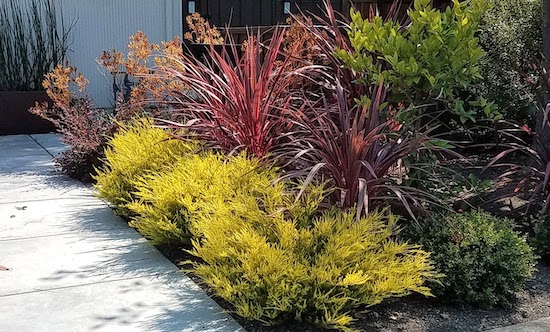
This patch of landscape has many nice colors.
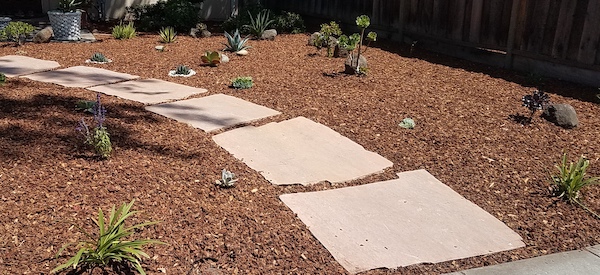
This very young landscape contains a few carefully selected plants.
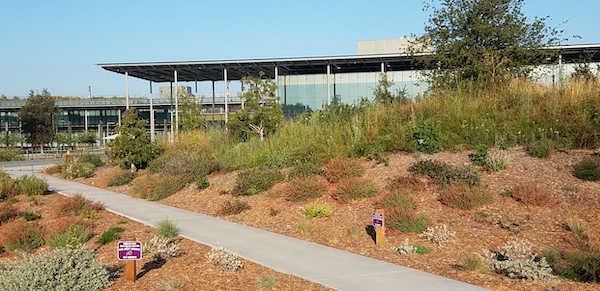
Microsoft’s new campus in Mountain View has lovely landscaping.
3. Bermuda and kikuyu grass are exceptions where herbicides might be needed.
4. Some of you may also be interested in watering with recycled water. One such service is the Purple Pipe Company.
Current Climate Data (July 2021)
Global impacts, US impacts, CO2 metric, Climate dashboard (updated annually)

Source: American Meteorological Society’s State of the Climate in 2020 report
Comment Guidelines
I hope that your contributions will be an important part of this blog. To keep the discussion productive, please adhere to these guidelines or your comment may be moderated:
- Avoid disrespectful, disparaging, snide, angry, or ad hominem comments.
- Stay fact-based and refer to reputable sources.
- Stay on topic.
- In general, maintain this as a welcoming space for all readers.
Comments that are written in batches by people/bots from far outside of this community are being removed.



